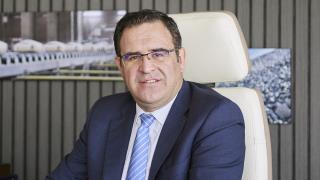Ahead of the 2014 IEEE-IAS/PCA Cement Industry Technical Conference, ICR speaks with the PCA's Gregory M Scott, president and CEO; Rick Bohan, director of Manufacturing Technology and Ed Sullivan, group vice president and chief economist, to learn more about the outlook for North American cement markets, as well features to look forward to at next month's meeting in Washington, DC.
ICR: Do you see a steady recovery for the US cement industry in 2014?
PCA: The continuation in the housing recovery, the emergence of growth in the commercial building sectors, and a gradual improvement in state finances all suggest the US cement industry will record another year of uninterrupted growth. The PCA expects the market will grow eight per cent in 2014.
ICR: How do you feel the US cement sector is coping with the need to limit environmental emissions with NESAP and CISWI measures coming into play?
PCA: The US cement industry has been reducing emissions since we first started measuring emissions – the NESHAP and CISWI rules continue that progress. The rules reflect advancements in new measuring technology like CEMS. Incorporating these newer technologies will result in an accelerated period of technology transfer throughout the industry as plants bring this equipment on line in a relatively short period of time.
ICR: How much are such policy changes leading technology and product innovation for the domestic cement industry?
PCA: The drivers for product innovation within the cement industry are our customers. The industry is providing cement based products that respond to the need for sustainable and resilient building products that are produced economically and efficiently and with as little impact to the environment as possible. Policy changes like NESHAP and CISWI may have some impact on operations but the product itself is driven by the customer. That’s why new and innovative cements like Portland blended limestone cements are demanded with ever increasing frequency.
ICR: Will the typical US cement plant look very different in 5-10 years from now?
PCA: On the outside, plants may not look much different than they do today. But on the inside, we’ll see the vast amounts of emissions data used to make the process even more efficient. We’ll continue to see advancements in automation, control, and especially data acquisition and handling.
ICR: What kind of technology will visitors to the IEEE-IAS/PCA meeting likely to see in terms of better energy efficiency?
PCA: They’ll hear Elizabeth Dutrow from EPA’s Energy Star program talk about how far the cement industry has come and where we’re headed in terms of energy efficiency. I wouldn’t want to spoil her presentation so I encourage readers to attend her presentation on Wednesday morning.
ICR: Can you tell us about the new training classes being held at the IEEE-IAS/PCA event?
PCA: We’re extremely excited to offer classes for new cement professionals in areas like:
• variable frequency drives and motors selection
• impactor technology
• refractory solutions and non-cement castable refratories
• full immersion simulator training on grinding operations and the pyroprocess
• critical concepts in dust collection
• quality control and its impact on plant process control
• air emissions estimating and environmental reporting
• dust collector design, operations, and maintenance for NESHAP emissions
• process aspects of successful implementation of alternative fuels
• process controls and automation.
There’s enough training here that you could meet all of your training needs at one time and in one place for the cost of one registration. It’s the best training programme anywhere.
ICR: Are you expecting a good turn out of varied exhibition booths at the IEEE-IAS/PCA in Washington DC?
PCA: Absolutely. This is the industry’s premier event and each year we see a host of new exhibitors. We fully expect to once again run out of exhibit space.
